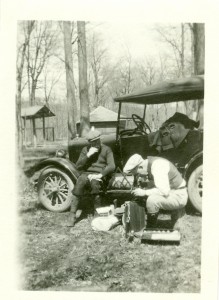History
Published on March 31, 2015 10:04 am MT Updated on February 1, 2019 10:38 am MT
 The Charles Maurer Herbarium Collection at Colorado State University has a rich and long history. In fact, the Charles Maurer Herbarium Collection is the oldest herbarium in the Southern Rocky Mountains and was founded in 1883 by Dr. James Cassidy.
The Charles Maurer Herbarium Collection at Colorado State University has a rich and long history. In fact, the Charles Maurer Herbarium Collection is the oldest herbarium in the Southern Rocky Mountains and was founded in 1883 by Dr. James Cassidy.
As curator of the herbarium, Cassidy collected plants from the foothills of Larimer County. However, he rarely put any locality information on his herbarium labels. A few of his specimens are at CS, but the majority are housed at the NY Botanic Garden Herbarium (NY). While Professor Cassidy was at CAC, the Agricultural Experiment Station was established under the Hatch Act of 1887. Cassidy headed the botany and horticulture research section of the new station. He was especially interested in native grasses, and grew 30 varieties at the college greenhouse and farm. Cassidy died suddenly in 1889 and was replaced shortly after by Dr. Charles spencer Crandall. Charles Crandall collected numerous specimens while he was curator, either alone or with his assistant Jacob Cowen. His first Colorado collections were made in 1890 in the vicinity of Fort Collins in such places as the College Farm, Dixon Canyon, Horsetooth Mountain, and the Poudre Canyon. Together, Crandall and Cowen collected nearly 10,000 specimens from around Colorado. These specimens are invaluable to our understanding of the Colorado flora, and formed the backbone of the very first Flora of Colorado published in 1906. This flora was written by Per Axel Rydberg, and based primarily on these specimens which were sent to the New York Botanic Garden in preparation of the flora.
Harold David Harrington was the curator of the herbarium for 25 years (1943-1968). During this time, Harrington contributed significantly to our understanding of the flora of Colorado. He not only collected nearly 10,000 specimens throughout the state but he used these specimens to form the Manual of the Plants of Colorado in 1954. This work is still highly regarded as an authority on the flora of Colorado, and at the time of publication approximately 1 out of every 30 species listed in the Manual constituted a new record for the state of Colorado.
